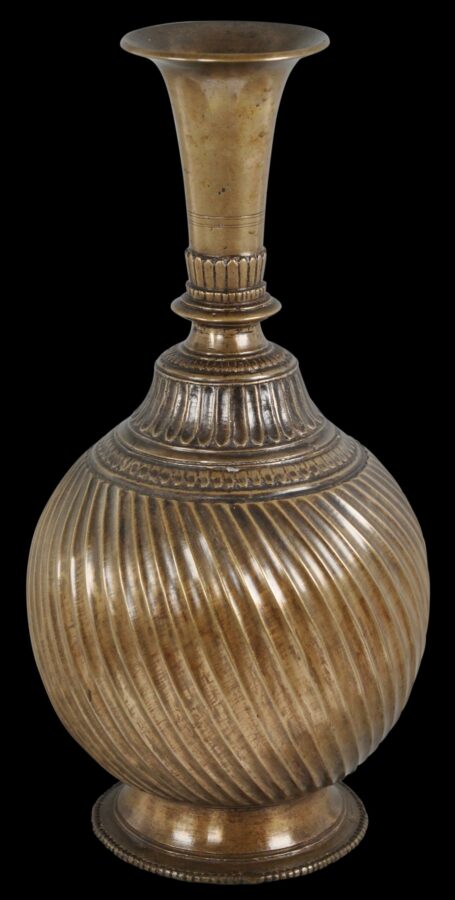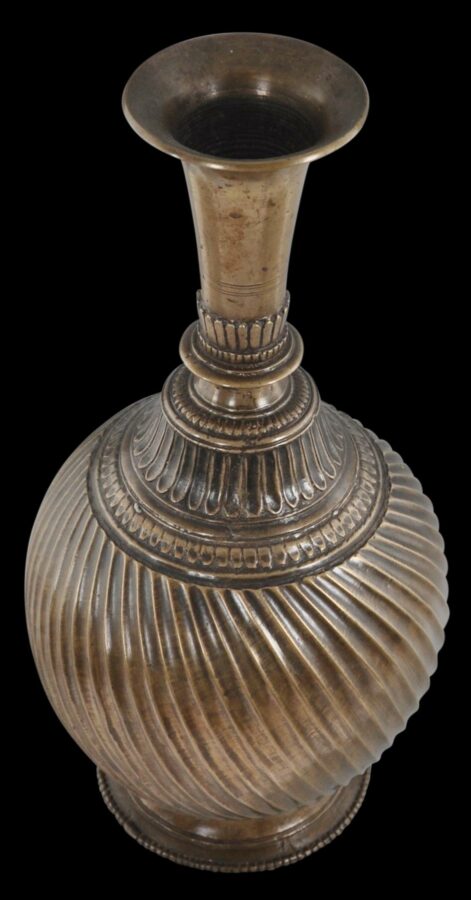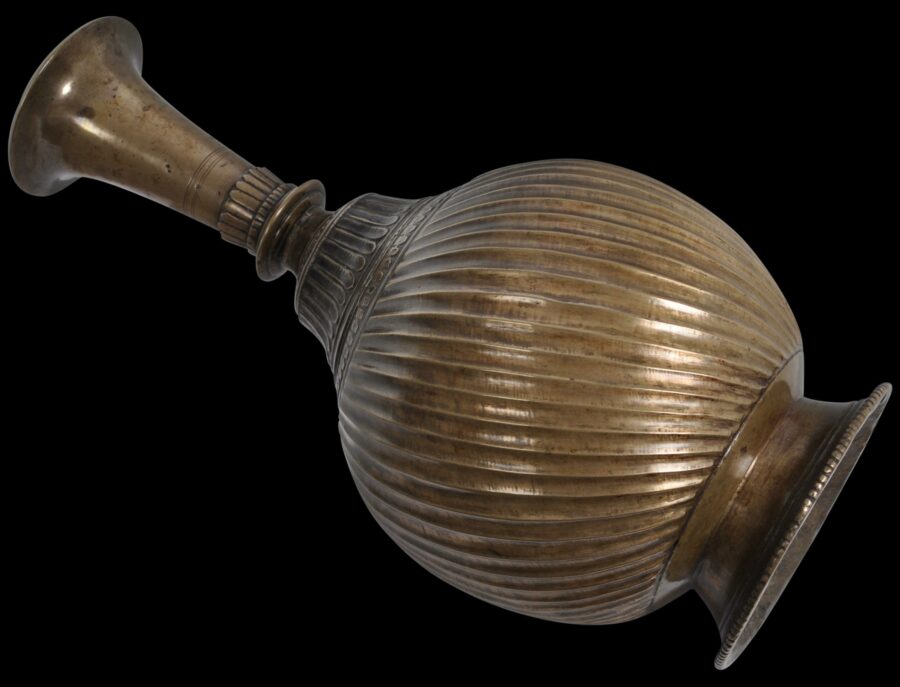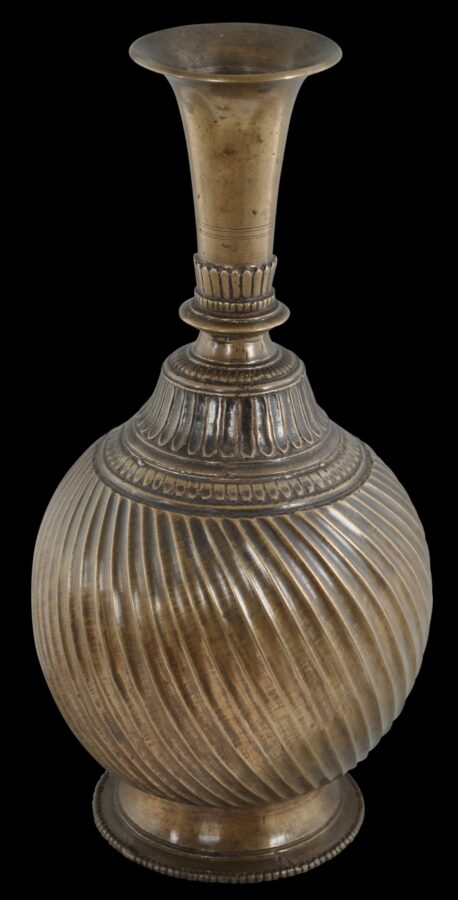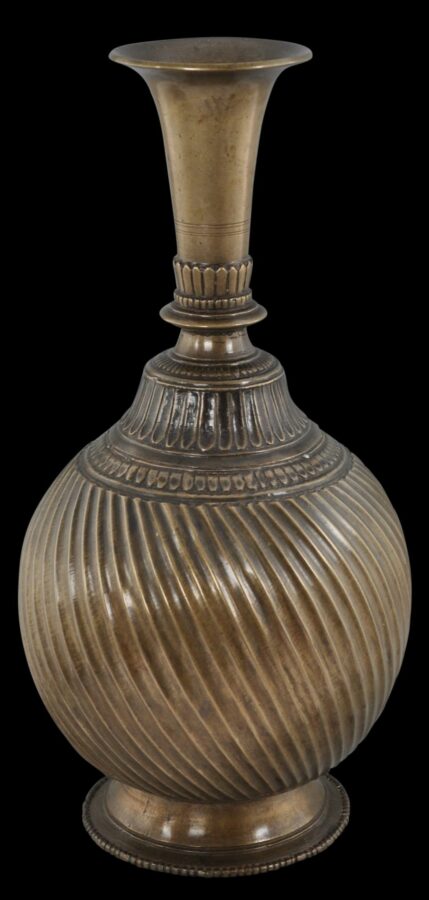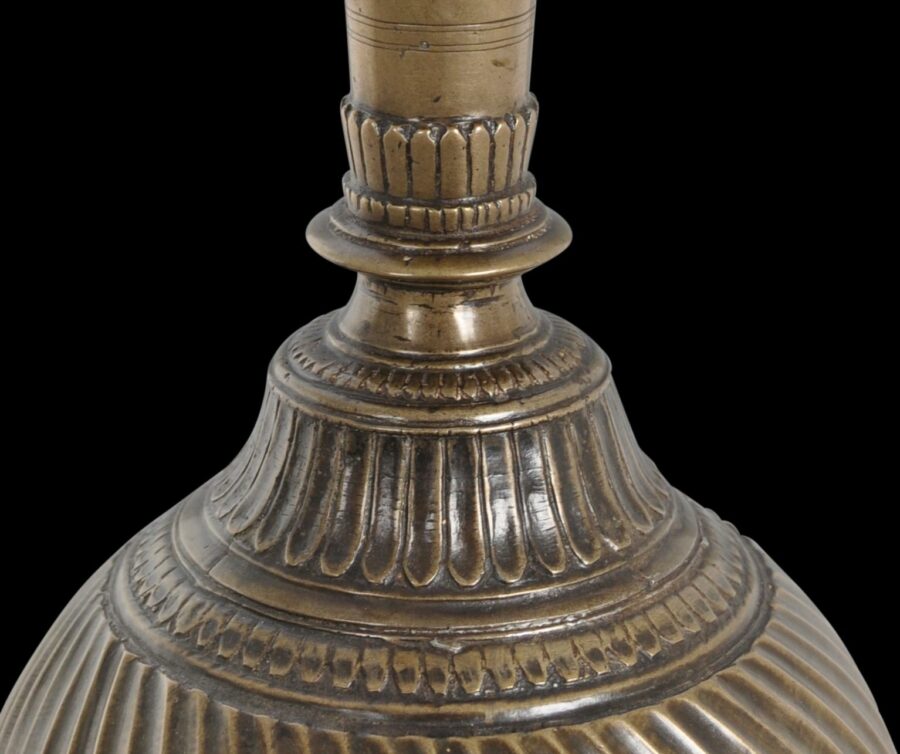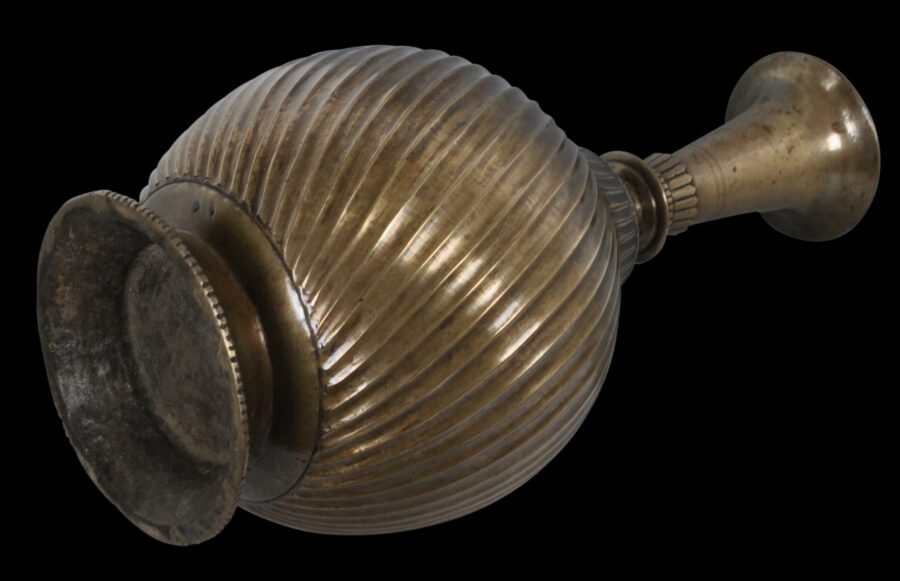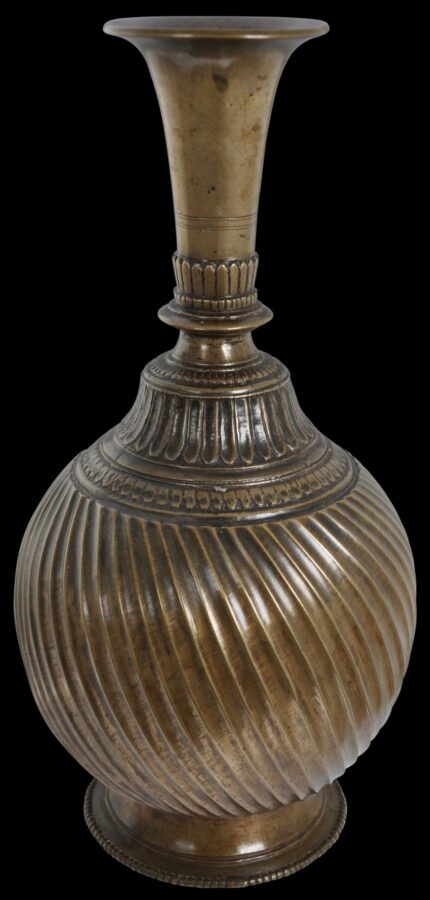This tall, elegant, brass vessel, known as a thyaka, is from Nepal. It is among the best examples of such a vessel of which we are aware. It has a beautiful form and a lovely colour and patina. It has a bulb-like body, sits on a ring foot, and has a long, tapering neck that opens to a wider mouth.
The body is decorated with swirling ridges in high relief. The shoulder of the vessel has been cast with lotus petals. The edge of the ring foot has a ‘pearled’ design and there are shoulder and neck are decorated with concentric rings and petal bands.
Such vessels were used during Nepalese festivals and special events for storing raksi, a distilled spirit. Most thyakas are plain and without ornamentation. This example is remarkable for the level of and sophistication of its ornamentation. Friedman (2000) illustrates several refined examples that are almost as decorative.
The form and the style of decoration relate to similar vessels from Mughal, northern and Deccan India for the 17th and 18th centuries.
The thyaka is in excellent condition. It is sculptural and has a very pleasing colour and superb presence.
References
Friedman, M.S., Nepalese Casted Vessels, Decanters & Bowls, Pilgrims Publishing, 2000.
Zebrowski, M., Gold, Silver & Bronze from Mughal India, Alexandria Press, 1997.


